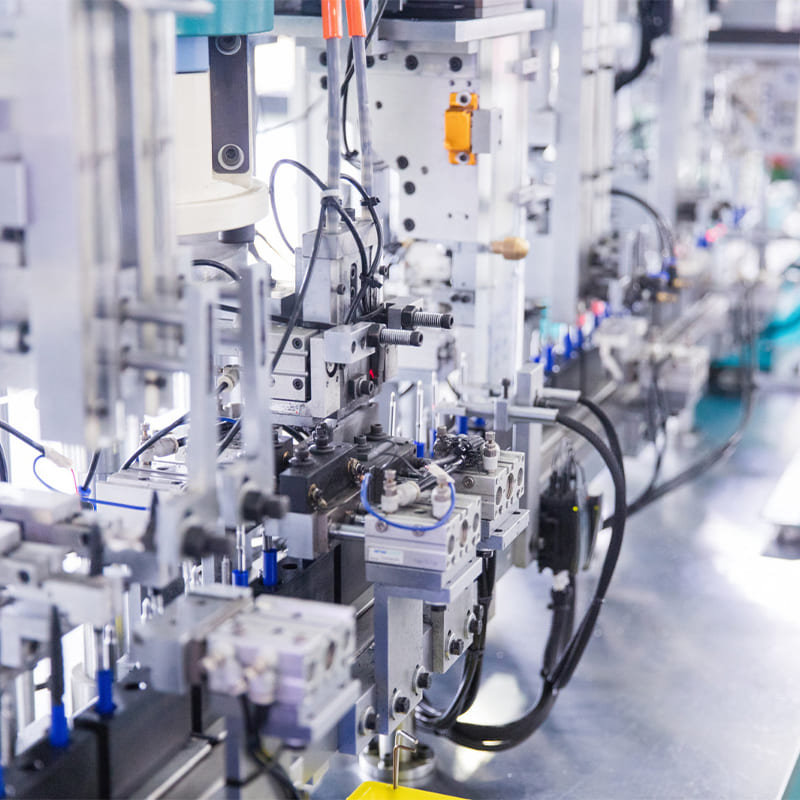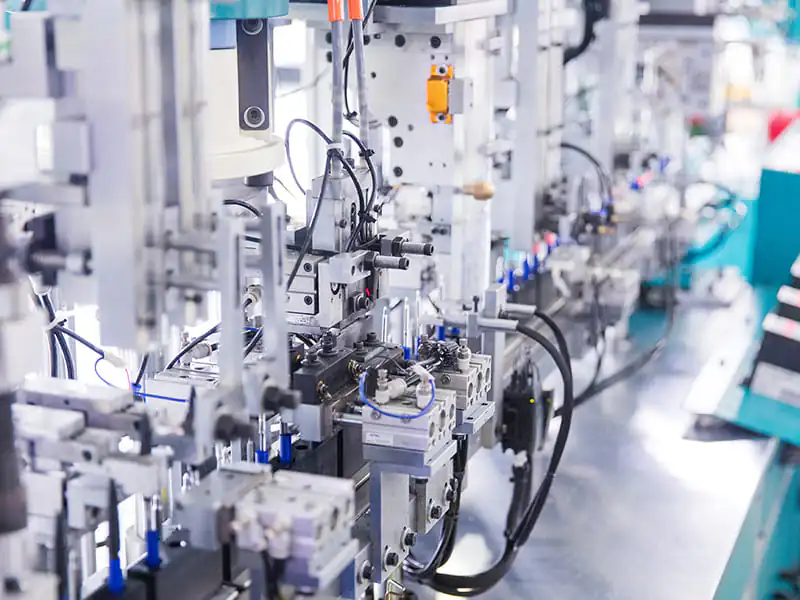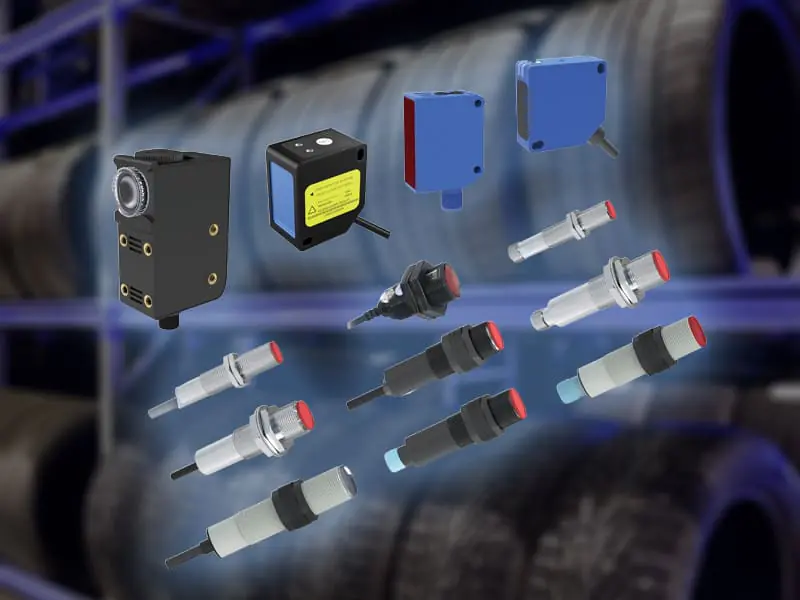Applications of Inductive Proximity Sensors in the Manufacturing Industry

Inductive proximity sensors play a crucial role in the manufacturing and metalworking industries. Known for their ability to detect metal objects with high precision and reliability, these sensors have become integral to automated production lines.
Their non-contact detection, durability, and resistance to interference make them ideal for a wide range of applications. This article will explore the practical uses of inductive proximity sensors in manufacturing, from improving production efficiency to enhancing product quality, while addressing customer pain points and delivering professional insights into the technology.
Applications of Inductive Proximity Sensors in Metalworking
Workpiece Detection in CNC Machines
In CNC (Computer Numerical Control) machines, such as lathes, milling machines, and grinders, inductive proximity sensors are widely used for detecting and positioning metal workpieces. Ensuring the correct placement of a workpiece is critical for machining precision, and inductive sensors provide a reliable, non-contact solution for detecting the presence of metal parts.
For example, in lathe operations, the placement of a workpiece directly affects machining accuracy. Inductive proximity sensors can detect whether a metal workpiece is correctly positioned, allowing the machining process to proceed smoothly. If the sensor detects a misaligned or missing part, the system triggers an alarm or halts operations, preventing material waste and equipment damage.
In milling and drilling machines, sensors also assist in tool positioning and detection, ensuring that tools are correctly placed during cutting processes. When tools wear out or shift position, sensors can immediately detect the anomaly, ensuring continuous and safe operation.
Parts Identification on Automated Assembly Lines
In automated assembly lines, inductive proximity sensors are frequently used to identify and detect metal parts. Accuracy in assembly is vital for maintaining production quality, and even the slightest misalignment or missing part can disrupt the entire production process or result in defective products. Inductive sensors provide high-precision detection of metal components, ensuring that every part is assembled correctly.
In the automotive industry, for instance, the assembly of a vehicle’s body requires numerous metal parts. Inductive proximity sensors are deployed to monitor the presence and position of these components during welding and assembly processes. They help avoid quality issues caused by missing or misaligned parts, while also facilitating the smooth operation of industrial robots for precise handling and placement of metal pieces.
Die Protection in Stamping Machines
During the metal stamping process, protecting the die is essential to prevent costly repairs and production downtime. Damage to stamping dies can cause significant economic losses and halt production. Inductive proximity sensors can monitor the die to ensure that metal materials are correctly positioned and that the die operates without obstruction.
On automatic stamping machines, inductive proximity sensors detect the position of metal sheets and the state of the die. If the sensor identifies that the metal material is not fully in place or an obstruction is present, the system will stop the machine, preventing damage to the die. This real-time monitoring significantly enhances the safety and reliability of the equipment.
Applications of Inductive Proximity Sensors in Manufacturing
Bolt Detection in Automated Assembly
Inductive proximity sensors are used to detect the presence and installation status of bolts and metal fasteners in many manufacturing scenarios. For instance, in automotive manufacturing, hundreds of bolts and fasteners are required to assemble a vehicle, and ensuring that each is properly installed is critical to vehicle safety.
Inductive sensors can precisely detect the presence of bolts and whether they are tightened adequately. By positioning sensors along the assembly line, manufacturers can prevent issues related to improperly installed fasteners, ensuring high assembly quality.
Metal Sorting Systems
In manufacturing, inductive proximity sensors are often employed in metal sorting systems. Through non-contact detection of metallic materials, sensors can differentiate between various types of metals. For example, in recycling or material sorting systems, inductive sensors detect the presence of metal and guide the sorting process for automated separation.
This application enhances the efficiency of production lines and minimizes the risk of human error. Due to their rapid response times (typically under 1 millisecond), inductive sensors ensure precise and consistent sorting even at high production speeds.
Quality Control in Production Processes
Inductive proximity sensors also play a key role in quality control during manufacturing. They are used to detect the dimensions, shape, and surface defects of metal products. For instance, during the production of steel plates or metal sheets, sensors can monitor thickness deviations and shape anomalies, ensuring that each product meets industry standards.
In precision manufacturing sectors such as aerospace or medical device production, inductive sensors can detect micron-level variations in metal components, ensuring the production of high-precision parts. This level of detection reduces the rate of defective products and contributes to overall product quality consistency.
Contributions to Efficiency and Quality
The use of inductive proximity sensors in manufacturing extends beyond detection and monitoring. These sensors play a vital role in improving production efficiency and product quality.
1. Reducing Downtime
The real-time detection capabilities of inductive proximity sensors minimize machine downtime by identifying issues early and preventing system failures. By automating the monitoring of production lines, factories can quickly respond to problems, reducing production interruptions and ensuring continuous workflow.
2. Enhancing Automation
As industries move toward greater automation under the Industry 4.0 paradigm, inductive proximity sensors are integral to enabling fully automated detection and control systems. When integrated with PLCs (Programmable Logic Controllers) and robotics, these sensors offer precise monitoring and control of production processes, significantly improving efficiency.
3. Improving Product Quality
In precision machining and assembly, inductive proximity sensors ensure that metal components meet required standards. They reduce human error during production and, through automated systems, enhance product uniformity and reliability. This contributes to consistent product quality and minimizes the rate of defective items.
Unlock Precision with Bedook Sensors!
Explore our extensive range of sensor products designed to meet your diverse needs. Whether you require customized solutions or technical expertise, our team is here to support you. Send us an inquiry for pricing and let’s discuss the best solutions for your industry!
Explore Bedook: Your Trusted Sensor Manufacturer
At Bedook, we specialize in designing, developing, and manufacturing a comprehensive range of proximity sensors and switches. Our extensive product lineup includes:
- Inductive Proximity Sensors
- Capacitive Proximity Sensors
- Photoelectric Sensors
- Ultrasonic Sensors
- Solid State Relays
- Various Accessories
With over 10,000 detailed product variations and a robust R&D team, we take pride in our ability to meet your unique requirements with tailored solutions and reliable performance.
Whether you’re seeking off-the-shelf products or customized designs, Bedook offers the expertise and production capacity to ensure your satisfaction.
Get in Touch Today!
We value your interest in our products and warmly encourage you to send us an inquiry. Let us help you find the perfect sensor solution for your application.
Thank you for considering Bedook—your trusted partner in innovation and quality manufacturing. We look forward to collaborating with you!






